

| Glow Worms - a detailed summary 2016 |
| 2016 Glow Worm sightings |
| Clipstone Old Quarter female Glow Worm data 2016 |
| January
and February continued the extremely mild Winter
remaining from the final months of 2015 and it looked set
to be an incredibly early Spring. The promise of a very early start to our larval surveys suddenly changed when it became much cooler, leading to similar weather conditions to that of a year earlier. Overnight temperatures were very low (although rarely with frost) and there were few invertebrates about during the daytime generally and it wasn't until the end of April that temperatures became warmer. Despite the cooler temperatures, we felt that conditions on many late afternoons and evenings, were still mild enough to have at least encouraged some larval activity, but surveying Clipstone Old Quarter drew a complete blank on each of the five dates we visited in March. |
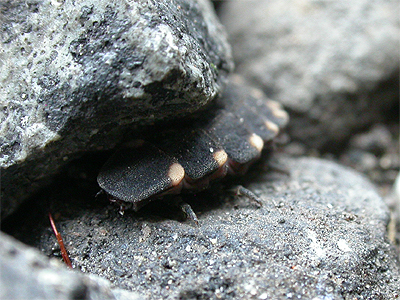 |
|
| ................. | ||
| Spring
2016 larval survey results and data It wasn't until April 5th, that we eventually recorded our first larva. April eventually produced just five larvae on 14 afternoon/evening surveys and we had concerns that the number of adults was going to be low. The table below shows the average larval lengths found over the course of Spring 2009 to 2016 in weekly periods. The data is incomplete for 2015 when regular surveying was not carried out. The figure after the forward slash represents the total number of larvae recorded to calculate the average larval length. |
||
|
|||||||||||||||||||||||||||||||||||||||||||||||||||||||||||||||||||||||||||||||||||||||||||||||||||||||||||||||||||||||||||||||||||
| ................. | |||||||||||||||||||||||||||||||||||||||||||||||||||||||||||||||||||||||||||||||||||||||||||||||||||||||||||||||||||||||||||||||||||
| There was an increase in the number of larvae found in Sections A, B, C and D of the survey site during May, but the totals were those we would usually have recorded some three or four weeks earlier. May eventually produced a final total of 81 larvae and we continued to make daily larval surveys until the end of the month, as we were (unusually by the end of May) still recording pre-pupating larvae. The overall larval size was worryingly down this Spring and the average larval length of 17.99mm, was well below the 20.36mm averaged recorded over successive Springs from 2009 to 2014. The overall lateness of larval activity in Spring 2016, is well illustrated in the graph below. | ||
| ................. |
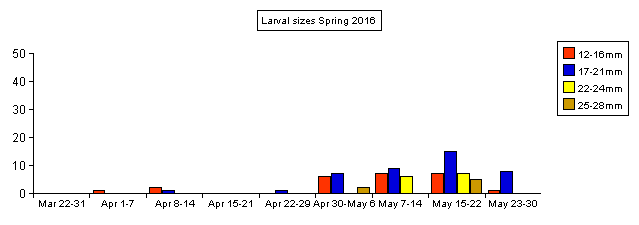 |
| ................. |
| The
2016 glowing season and a reduction in the survey area Over previous years, the size of the survey area we covered when surveying for adult Glow Worms, had increased to the point of it becoming physically impossible for both of us to cover on a nightly basis, and so for 2016 we restricted the survey area to cover sections A, B, C, D, J, K and O on the map. A total of approximately 411 female Glow Worms were recorded between June 3rd and July 24th, with two clear peaks of 44 females on June 19th, followed by a second (main) peak of 92 females on July 4th, then 94 females on July 6th. Peak numbers have generally showed an increase here since 2010 and there is some evidence to suggest that the glowing season is shortening. 2016 was another short glowing season of 52 days and remarkably similar to that of 2013, when the season ended after just 50 days. The similarity with 2013 doesn't really end there, as both the 2013 and 2016 graphs of female totals are quite strikingly alike. With a peak in numbers coming in early July, both years also produced two earlier peaks, but these were less detectable in 2013. |
 |
 |
 |
 |
 |
 |
| ................. |
| The length of the glowing season was considerably longer in both 2010 (81 days) and 2011 (98 days) and both those seasons started early, as did 2009 which lasted 70 days (graph not shown). There seems to be a general rule that the later the start to the glowing season at Clipstone Old Quarter, the shorter that season ultimately ends up being. Time and further study will tell. |
| .. | |
| Direct
comparisons with survey sections in 2014 and 2016 Sections A, B, C, D, J, K and O, form a lengthy survey route and only these sections are compared here. 2014 and 2016 were very different seasons and the following graphs provide an interesting comparison, revealing how Glow Worm populations, emergences and peak dates vary from year to year. |
|
| ... | |
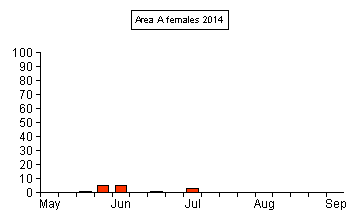 |
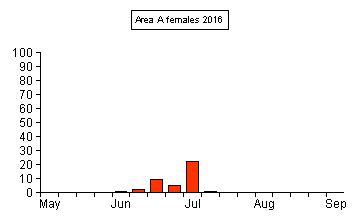 |
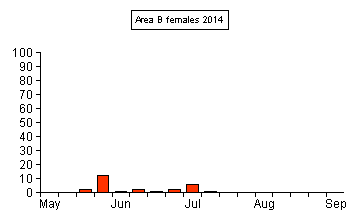 |
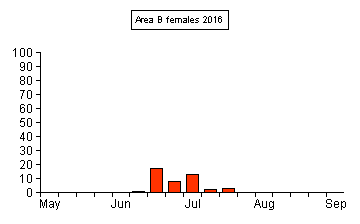 |
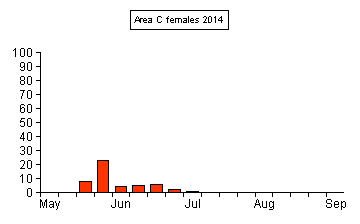 |
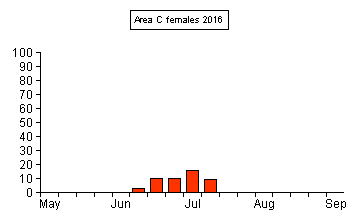 |
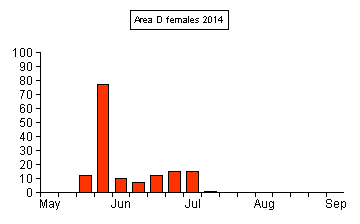 |
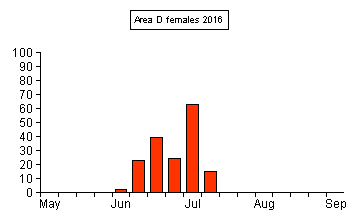 |
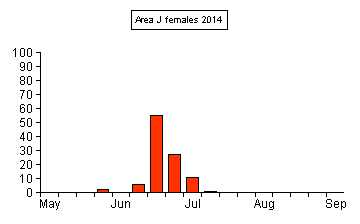 |
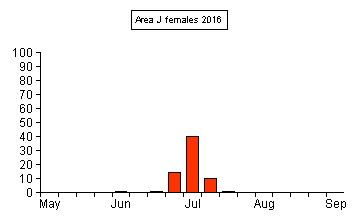 |
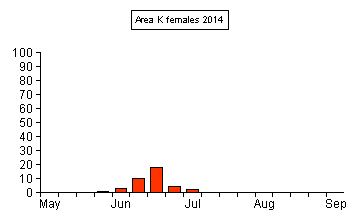 |
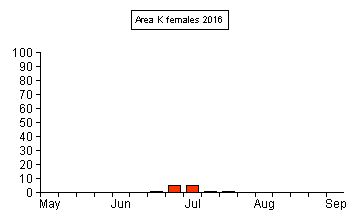 |
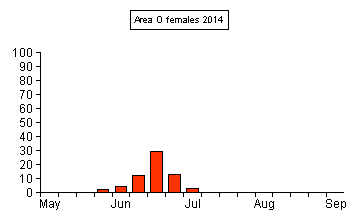 |
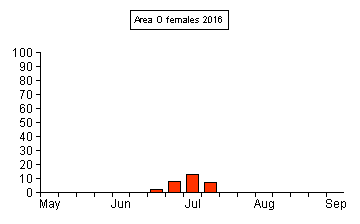 |
| ... | |
| Male
Glow Worm activity We recorded a total of 38 male Glow Worms during the season, but none after three on July 15th. Peak dates for male activity, based on the number of females glowing for just one night per 50 females, was between June 22nd to 27th. This comes just before the highest counts of 92 females on July 4th and 94 females on July 6th. Previous peak numbers of males have occurred either just before, or just after peak female totals. |
||
| ... |
|
|
|||||||||||||||||||||||||||||||||||||||||||||||||||||||||||||||||||||||||||||||||||||||
| Pine
harvesting at Clipstone Old Quarter After several years of waiting, the go-ahead was finally given to clear the remaining areas of commercial Pine in the Clipstone Old Quarter area. Natural England East Midlands intention, being to complete the removal of the commercial Pine crop in one go and begin the process of restoring the area to Oak/Birch woodland and lowland heath. Unfortunately, commercial timber removal has proved to be a destructive process in the past, one which has had implications on vulnerable Glow Worm populations. |
||
| ................. | ||
| We were originally
consulted by the Forestry Commission, for any additional
suggestions (other than those they had already listed) of
how to minimise the effect of timber felling and removal
on the Glow Worm population and habitat. To be fair to the Forestry Commission, they have made attempts to work with recorders such as ourselves and they did put an end to the damage to habitat caused by the Dukeries Car Rally and its followers. However, there was no response from the Forestry Commission to the phone calls made when we found a section of Clipstone Old Quarter on fire on the evening of July 13th. Fortunately the fire burning four car tyres and other tipped rubbish went out naturally as there had been some rain, but the rubbish still remains. But despite being regarded by many as Nottinghamshire's Glow Worm experts and although it was nice to be asked about our thoughts and proposals to reduce effects of the felling/removal work, the whole process of pre-work consultation appears to mean very little and is clearly just a 'necessary process' site management have to adhere to, when they appear to already have everything organised and decided. |
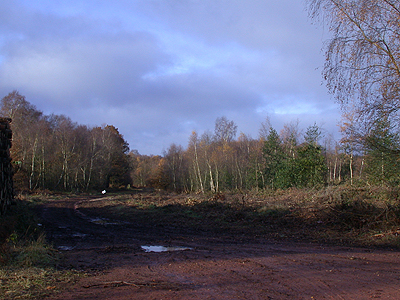 |
|
| ................. | ||
| Readers of
previous Glow Worm summaries on this website, will
remember what a destructive process timber felling and
extraction is when using heavy machinery and the effect
previous operations have had on the Glow Worm population
here before. In our 2014 summary, we wrote "the good number of larvae found along section S in Autumn 2013, proved to be virtually wiped out by the felling and timber extraction process, and only six females made it to maturity, when the number of female larvae was known to have been much higher before the work took place. Although the felling is necessary to the eventual restoration of the site back to heathland/woodland, it will change the site and affect its microclimate. The Pines create shade, help to maintain higher levels of moisture and act as a wind-break. Removing them opens up the site, exposes it and dries it out, effects we have seen at the nearby Sherwood Heath SSSI." |
| ................. | ||
| The above extracted text
is relevant to the felling operations of Autumn 2016,
which has potentially damaging implications on Glow Worm
habitat along survey sections I, J, K, L, M, N, O, P and
R, shown in the aerial map below. The heavy machinery used is a large part of the problem. We understand that it is impractical to clear fell the area by hand, as that method would take considerably longer, but would be less damaging to habitat. Its a shame that government funding cannot be found for this (the area being part of the Sherwod Forest NNR), as despite assurances that contractors are considerate and careful in their work, they're often not in their eagerness to make a profit. Thankfully, weather conditions were less wet than during felling/removal in 2013, so there was not the same damage to forest tracks. However, sections L (through standing log piles) and O (track widening) have been badly affected. Before and after photographs of section L, are shown right and above right. |
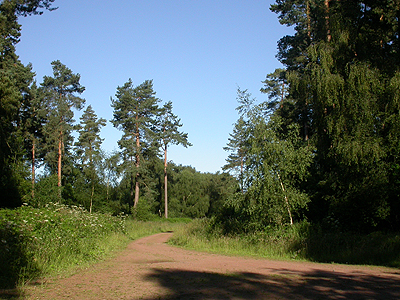 |
|
| ................. | ||
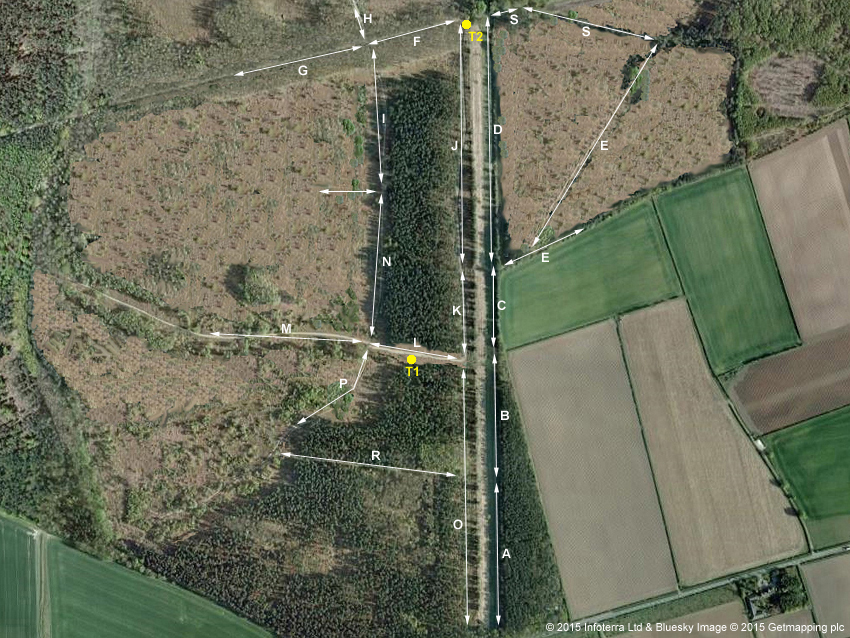 |
||
| .. |
| Following our decision to reduce the length of our survey area, it will be interesting to monitor Glow Worm numbers in the affected sections of J, K and O after felling/timber removal operations. The Glow Worm population in section O is expected to have been decimated through track widening and is now more than double what it was. |
| .. | ||
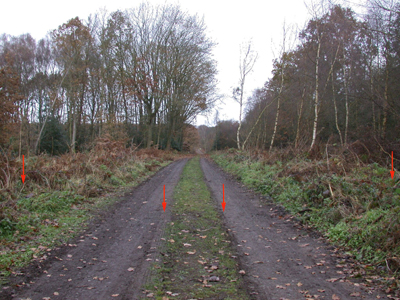 |
The track has been taken
back to its original constructed width, but as the
vegetation encroached across the tracks over a number of
years, suitable habitat for hunting larvae and an ideal
place for female Glow Worms to glow from, moved towards
the centre of the track. The photograph on the left, shows the view looking along the now widened track of section O. The two arrows in the centre, show the width of the track as it has been for the past number of years. The outer two arrows show the limits of where the spoil has been deposited and fresh vegetation grew before the onset of colder weather. The majority of Glow Worm larvae hatching from any eggs laid in 2016, and larvae remaining from 2014 and 2015 females are likely to have been over-wintering within the areas between the central and outer arrows, but its doubtful whether many will survive and we expect very few females to appear along this section in 2017. |
|
| .. | ||
| Forestry operations have showed us how Glow Worm populations can easily become fragmented, as they have done over many years in the Sherwood Forest area. We have no reason to disbelieve the accounts of still living local residents, who remember when Glow Worms were common between Edwinstowe and Ollerton. However, we do find ourselves being disbelieved in some quarters, that Glow Worms are not in decline, when they clearly are in Nottinghamshire. | ||
| ... | ||
| Nottinghamshire
Glow Worm Survey results 2016 Thanks once again to a small group of people who took time out to survey existing, or potential Nottinghamshire sites for Glow Worms this year. It was nice to discover that Glow Worms are at the western end of Sherwood Heath SSSI, where it borders Cockglode Wood, but many sites with good Glow Worm habitat continue to produce no sightings. Records (including negative reports) were submitted by the following list of recorders this year - Sandy Aitkin, Martin Dale, Jason and Calum King, Wil Heeney, Ludwik Michalek, Trevor and Dilys Pendleton. |
||||||||||||
| .. |
| Surveyed | Site name | Grid ref | Site type/habitat | Qty | Notes | Recorder | ||||||
| ........................ | . | ........................................................ | . | . | . | ................................................ | . | . | . | . | . | |
| July 21st | Clumber Park (Springlands) | SK613763 | Woodland edge | 1 | Single female from a previously known area | LM. | ||||||
| July 19th | Sherwood Heath | SK647675 | Heathland | 2 | Two females recorded | SA. | ||||||
| July 18th | Beech Hill Wood | SK646643 | Deciduous woodland and field edge | 0 | No Glow Worms recorded | LM. | ||||||
| July 18th | Beech Wood | SK645630 | Deciduous woodland and field | 0 | No Glow Worms recorded | LM. | ||||||
| July 18th | Cutt's Wood | SK647621 | Mixed woodland | 0 | No Glow Worms recorded | LM. | ||||||
| July 18th | Near Mansfield | SK5759 | Mature mixed woodland | 0 | A female reported from this private site in 2015, but no Glow Worms recorded during this survey | MD. | ||||||
| July 14th | Toad Holes Wood | SK617882 | Mature deciduous wood | 0 | No Glow Worms recorded | LM. | ||||||
| July 12th | Gosling Carr | SK660721 | Alder Carr/wetland | 0 | No Glow Worms recorded | TP. DP. | ||||||
| July 12th | Blackcliffe Hill Plantation | SK664710 | Coniferous plantation | 0 | No Glow Worms recorded | TP. DP. | ||||||
| July 12th | Walesby Heath/Scout Camp | SK665781 | Grassy heathland | 0 | No Glow Worms recorded | TP. DP. | ||||||
| July 12th | Whitewater Lane, Walesby | SK663702 | Grassy heathland | 0 | No Glow Worms recorded. Site last surveyed in August 2012 | TP. DP. | ||||||
| July 10th | Holme Pierrepont/Skylarks NR | SK619391 | Former gravel pit works | 0 | No Glow Worms recorded and no males attracted to artificial lure | MD. | ||||||
| July 10th | Holme Pierrepont/Blotts Pit | SK620388 | Former gravel pit works | 0 | No Glow Worms recorded and no males attracted to artificial lure | MD. | ||||||
| July 10th | Holme Pierrepont/A52 Pit | SK615384 | Grassland/wetland | 0 | No Glow Worms recorded and no males attracted to artificial lure | MD. | ||||||
| July 9th | Misson Carr NR | SK715975 | Wet woodland, marsh and grassland | 0 | No Glow Worms recorded. Site thought to be possibly too damp/wet | LM. | ||||||
| July 4th | Colwick Park and Racecourse | SK607396 | Mixed grassland and light woodland | 0 | No Glow Worms recorded. Some habitat considered suitable near racecourse but serious light pollution from Greyhound track badly affected western end. Large areas of the park muddy and too poorly drained but less light pollution | MD. WH. | ||||||
| June 28th | King's Clipstone/Intake Wood | SK593642 | Coniferous plantation | 0 | No Glow Worms recorded | TP. DP. | ||||||
| June 26th | Swinecote Road, Budby | SK627688 | Grass verge | 2 | Two larvae recorded glowing. A previously known site at the junction of the A616 and the B6034 | TP. DP. | ||||||
| June 26th | Edwinstowe STW | SK642670 | Farm track/riverside | 0 | No Glow Worms recorded | TP. DP. | ||||||
| June 26th | Cockglode Wood | SK642673 | Woodland/heathland | 1 | Single female. Site runs joins on to Sherwood Heath SSSI, which is a known Glow Worm site | TP. DP. | ||||||
| June 22nd | Peafield Lane | SK572657 | Mixed woodland | 0 | No males attracted to artificial lure left on site | TP. DP. | ||||||
| June 22nd | Peafield Lane | SK571654 | Coniferous plantation | 0 | No males attracted to artificial lure left on site | TP. DP. | ||||||
| June 19th | Near Peafield Lane | SK601664 | Woodland edge | 1 | Single female from a previously unknown area | TP. DP. | ||||||
| June 19th | Bradmer Hill | SK598665 | Woodland edge | 1 | Single female recorded | TP. DP. | ||||||
| June 18th | King's Clipstone/Archway Rd | SK608657 | Farm track/riverside | 0 | No Glow Worms recorded | TP. DP. | ||||||
| June 18th | Hazel Gap to Gleadthorpe | SK601710 | Woodland edge | 0 | No Glow Worms recorded | TP. DP. | ||||||
| June 18th | Fox Covert Wood and quarry | SK563822 | Disused limestone quarry. | 0 | No Glow Worms recorded | LM. | ||||||
| June 17th | Harlow Wood | SK5556 | Coniferous plantation | 44 | Recently discovered (2013 at latest) healthy colony on strictly private land | JK. CK. | ||||||
| June 9th | King's Clipstone/Archway Rd | SK608657 | Farm track/riverside | 0 | No Glow Worms recorded | TP. DP. | ||||||
| June 9th | New Lodge Plantation | SK607658 | Woodland edge | 0 | No Glow Worms recorded | TP. DP. | ||||||